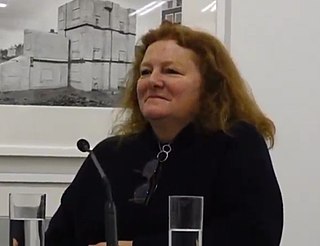
Dame Rachel Whiteread is an English artist who primarily produces sculptures, which typically take the form of casts. She was the first woman to win the annual Turner Prize in 1993.

Tiger Bay was the local name for an area of Cardiff which covered Butetown and Cardiff Docks. Following the building of the Cardiff Barrage, which dams the tidal rivers, Ely and Taff, to create a body of water, it is referred to as Cardiff Bay. Tiger Bay is Wales’ oldest multi-ethnic community, with sailors and workers from over 50 countries settling there from the mid-19th century onwards.

Cardiff Bay is an area and freshwater lake in Cardiff, Wales. The site of a former tidal bay and estuary, it serves as the river mouth of the River Taff and Ely. The body of water was converted into a 500-acre (2.0 km2) lake as part of a UK Government redevelopment project, involving the damming of the rivers by the Cardiff Bay Barrage in 1999. The barrage impounds the rivers from the Severn Estuary, providing flood defence and the creation of a permanent non-tidal high water lake with limited access to the sea, serving as a core feature of the redevelopment of the area in the 1990s.

Maesteg is a town and community in Bridgend County Borough, Wales. Maesteg lies at the northernmost end of the Llynfi Valley, close to the border with Neath Port Talbot. In 2011, Maesteg had a population of 20,612. The English translation of Maesteg is 'fair field'.

South Wales is a loosely defined region of Wales bordered by England to the east and mid Wales to the north. Generally considered to include the historic counties of Glamorgan and Monmouthshire, south Wales extends westwards to include Carmarthenshire and Pembrokeshire. In the western extent, from Swansea westwards, local people would probably recognise that they lived in both south Wales and west Wales. The Brecon Beacons National Park covers about a third of south Wales, containing Pen y Fan, the highest British mountain south of Cadair Idris in Snowdonia.

National Museum Cardiff is a museum and art gallery in Cardiff, Wales. The museum is part of the wider network of Amgueddfa Cymru – National Museum Wales. Entry is kept free by a grant from the Welsh Government; however, they do ask for donations throughout the museum.
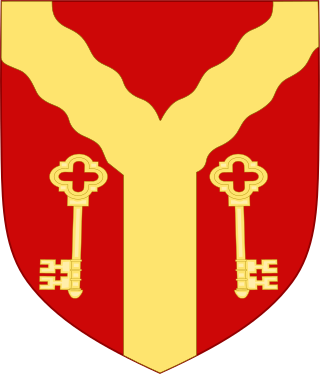
Cardiff Metropolitan University, formerly University of Wales Institute, Cardiff (UWIC), Athrofa Prifysgol Cymru, Caerdydd (APCC) and commonly referred to as Cardiff Met, is a university located in the city of Cardiff.

Cardiff City Football Club is a professional association football club based in Cardiff, Wales. It competes in the Championship, the second tier of the English football league system. Founded in 1899 as Riverside A.F.C., the club changed its name to Cardiff City in 1908 and entered the Southern Football League in 1910 before joining the English Football League in 1920. The team has spent 17 seasons in the top tier of English football, the longest period being between 1921 and 1929. Their most recent season in the top flight was the 2018–19 Premier League season.

The music of Cardiff has been dominated mainly by rock music since the early 1990s with later trends developing towards more extreme styles of the genre such as heavy metal and metalcore music. It, along with the nearby music scene in Newport, has brought a number of musicians to perform or begin their careers in South Wales.
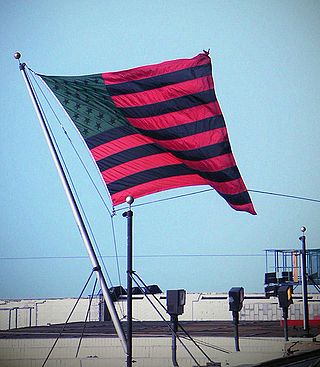
David Hammons is an American artist, best known for his works in and around New York City and Los Angeles during the 1970s and 1980s.

The Pierhead Building is a Grade I listed building in Cardiff Bay, Wales. One of Cardiff's most familiar landmarks, it was built in 1897 as the headquarters for the Bute Dock Company.

The South Wales derby is a local derby between Welsh association football clubs Cardiff City and Swansea City. The fixture has been described by The Independent as one of the fiercest rivalries in British football. Although based in Wales, both clubs play in the English football league system and have won English honours: Cardiff the FA Cup in 1927 and Swansea the Football League Cup in 2013.

Alliance is a 25-metre-high (82 ft) sculpture in the centre of Cardiff, Wales, created by Paris installation artist Jean-Bernard Metais. It consists of a large, partly enamelled, stainless steel arrow, and a hoop that glows in the dark. It was financed by the St David’s shopping centre as part of a £1.5m public art scheme in the city centre, and was unveiled on 3 December 2009.

The John and Mary Pappajohn Sculpture Park is a 4.4-acre (1.8 ha) park within Western Gateway Park in Des Moines, Iowa. It opened in 2009 with 24 sculptures, with four more acquired later. The sculpture park is administered by the Des Moines Art Center and contains works by artists such as Louise Bourgeois, Jaume Plensa, Ai Weiwei, and Barry Flanagan. It is considered "one of the most significant collections of outdoor sculptures in the United States".
Garth Evans is a British sculptor and former college lecturer at St Martin's School of Art, London.
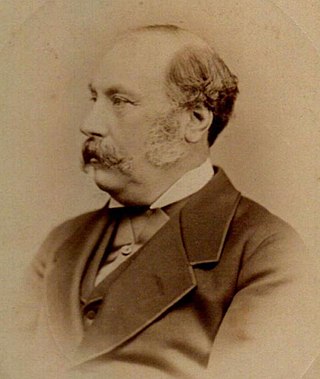
James Harvey Insole JP was an English businessman who consolidated and developed the extensive South Wales coal mining and shipping business begun by his father George Insole.

Craig-y-parc House is a country house in Pentyrch, Cardiff, Wales. Dating from 1914 to 1918, it was built for Thomas Evans, a colliery owner, by Charles Edward Mallows. The house reputedly cost £100,000. Craig-y-parc is a Grade II* listed building. The garden and park surrounding the house has its own Grade II* listing on the Cadw/ICOMOS Register of Parks and Gardens of Special Historic Interest in Wales, is a designated conservation area and contains a number of listed structures. The house now operates as a residential school for children and young adults with disabilities.
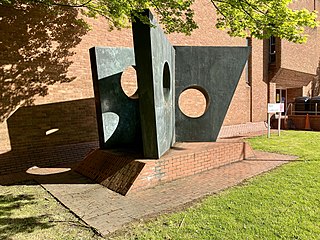
Three Obliques (Walk In) is a 1968 sculpture by Barbara Hepworth. Three casts exist; two are in private collections and a third is displayed outside the Cardiff University School of Music in Cardiff, Wales. It is cast in bronze on a monumental scale.

















